Blaze Your Own Trail – Sirena Dufault
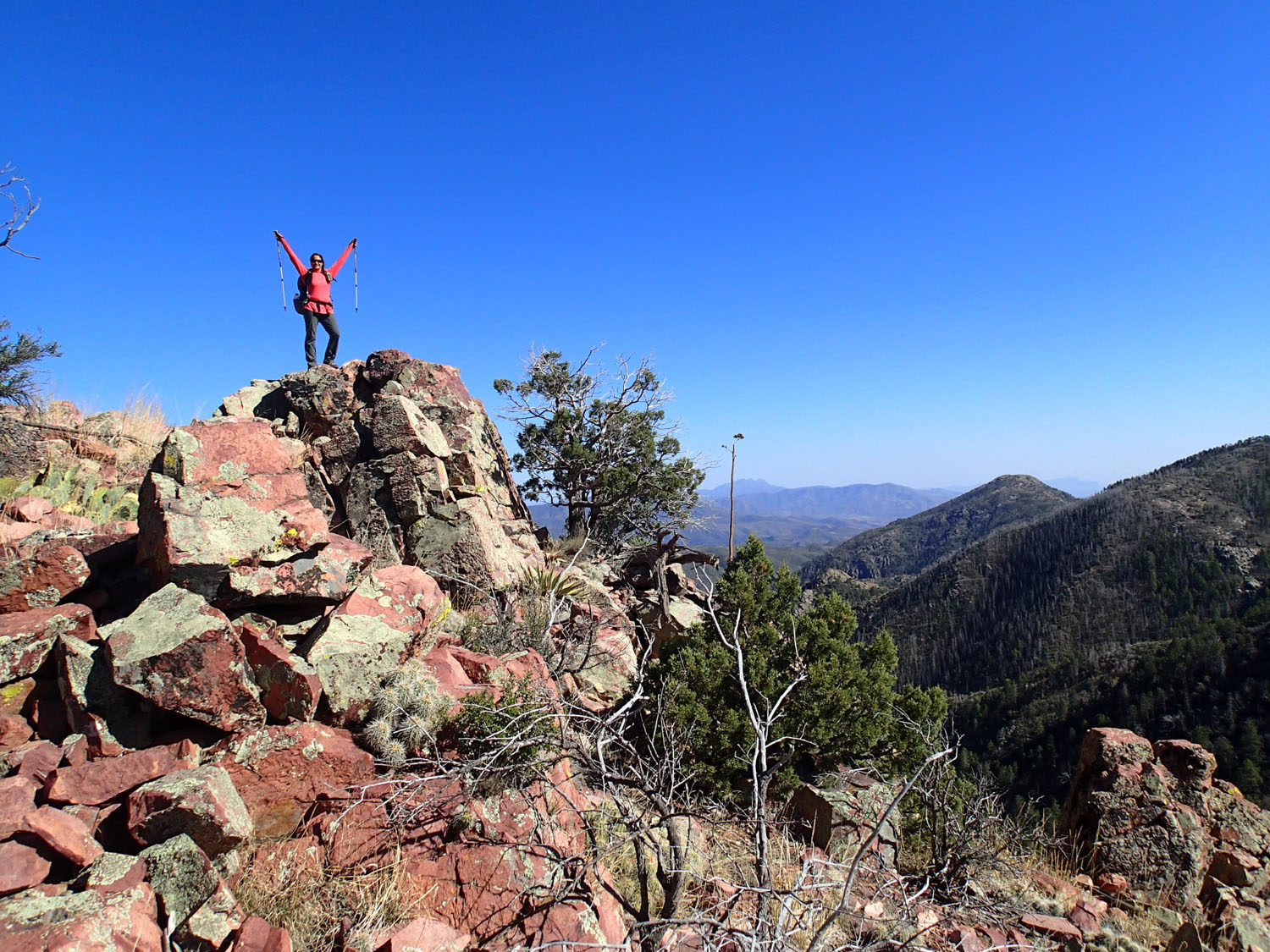
Blaze Your Own Trail
Meet Sirena Dufault of Trails Inspire
Interview by Hailey Hirst
There are some people you meet who carry such a spark you can’t help but feel inspired. That’s what I felt when I met Sirena Dufault. She’s the kind of person who decides to do something and makes it happen.
Despite flares of fibromyalgia pain from a vehicle impact 20 years ago, Sirena currently runs a company in Tucson, Arizona called Trails Inspire. She writes about her outdoor experiences hiking, backpacking, rafting, and canyoneering. She speaks about conservation. She advocates for volunteer work and diversity in the outdoors.
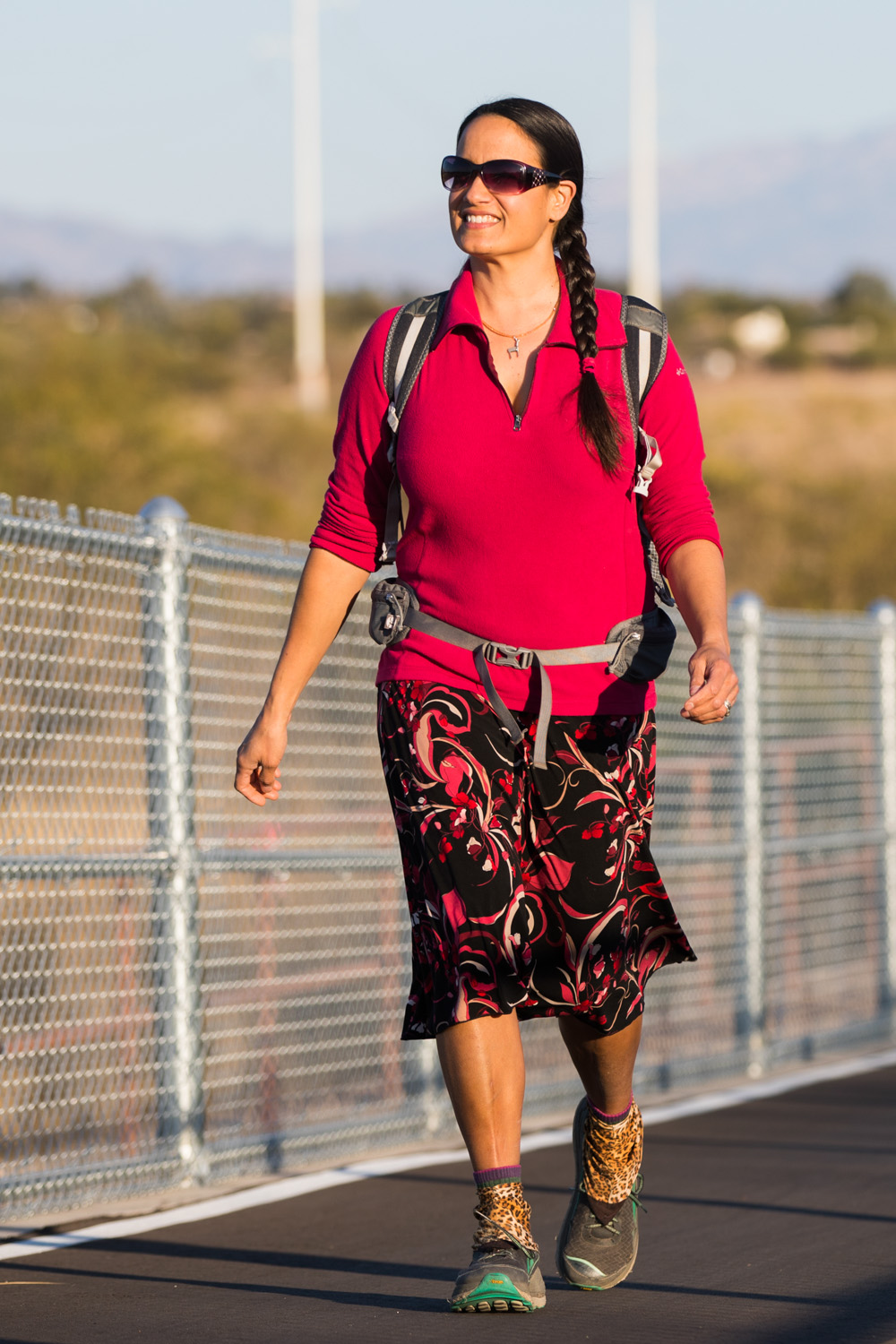
Sirena hiking The Loop in Tucson
And when the Arizona Trail wasn’t finished before she planned to section-hike it, she went out every other Thursday to help build that trail. And then thru-hiked the AZT a second time in 2014, becoming the leading expert and promoter of the trail and its Gateway Communities.
The vein running through much of Sirena’s story is the Grand Canyon. From guiding rafts up the muddy Colorado to section hiking the canyon’s entire length, being helicoptered out and building trails in its gateway communities, the Grand Canyon is a place that keeps calling her home.
I caught up with Sirena again and asked her more about her pull to this place, her work building trails, the mind/body balance of dealing with injuries and chronic pain, and I came away from our phone call feeling revived.
After all, if we can’t find the trail we want (literal or otherwise), why not build our own?
Note: This interview has been condensed from a phone conversation, edited for brevity and clarity.
Meet Sirena:
Hailey: What was your first experience in the Grand Canyon?
Sirena: My first experience in the Grand Canyon was on my way to Arizona [from Chicago] to go to school. I drove across the country with my boyfriend at the time in a little red sports car. The first thing we did when we got to Arizona was go to the Grand Canyon. It was raining and we went to some of the overlooks and I remember having a really hard time wrapping my head around it. It looked like every photo I had ever seen, but it’s just hard – especially for someone from a completely flat place like Chicago – it’s hard to understand what you’re looking at.
I remember having a really hard time wrapping my head around it. It looked like every photo I had ever seen, but… especially for someone from a completely flat place like Chicago – it’s hard to understand what you’re looking at.
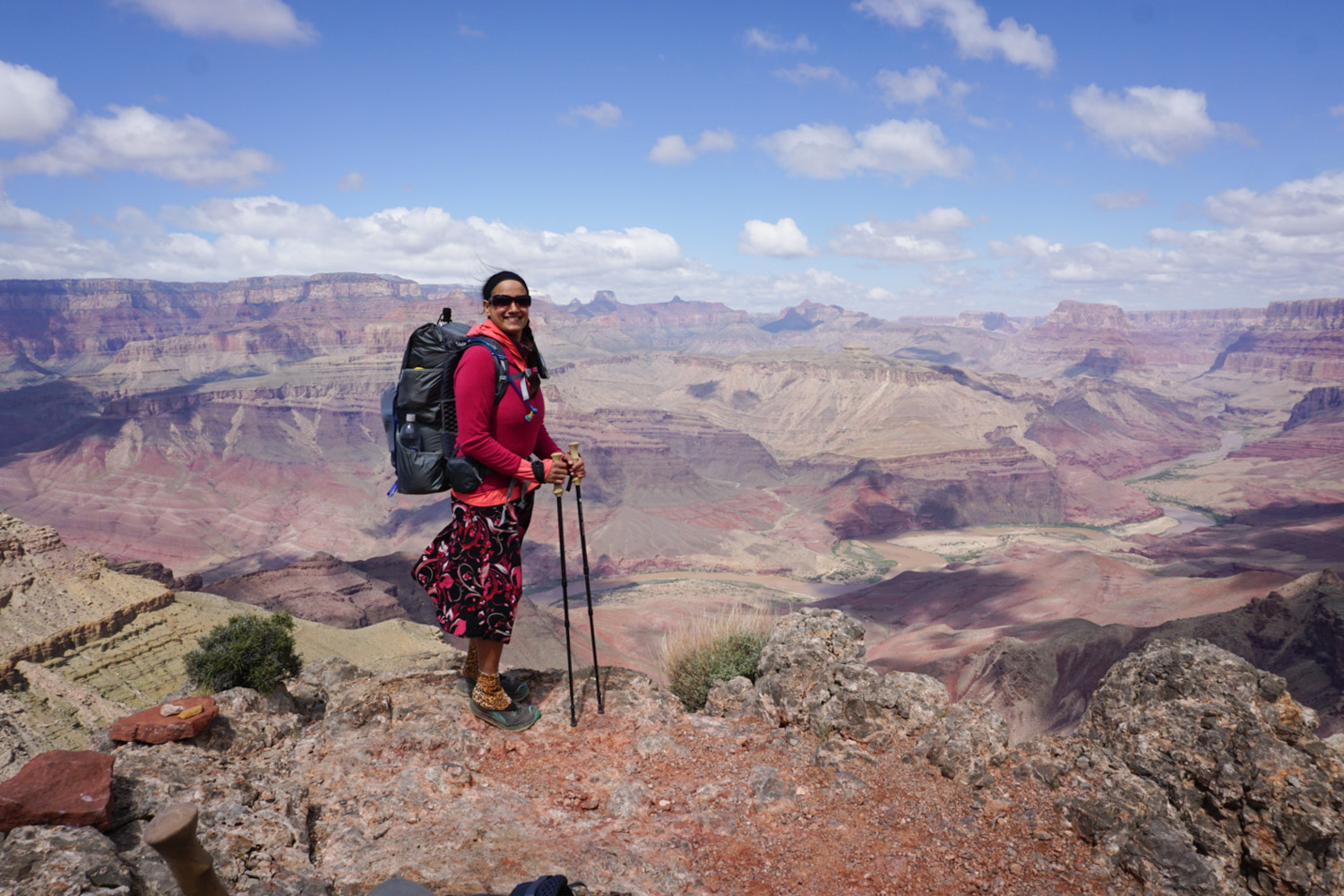
Tanner Trail, Grand Canyon
It wasn’t until the next day when we did a hike from the South Kaibab trailhead to Cedar Ranch, that I actually got to experience the Grand Canyon for the first time. The thing about the Grand Canyon is that it completely changes in perspective based on which layer you are in and how deep into the canyon you are. [Hiking] is a completely different experience than just looking over and seeing one static view from the rim.
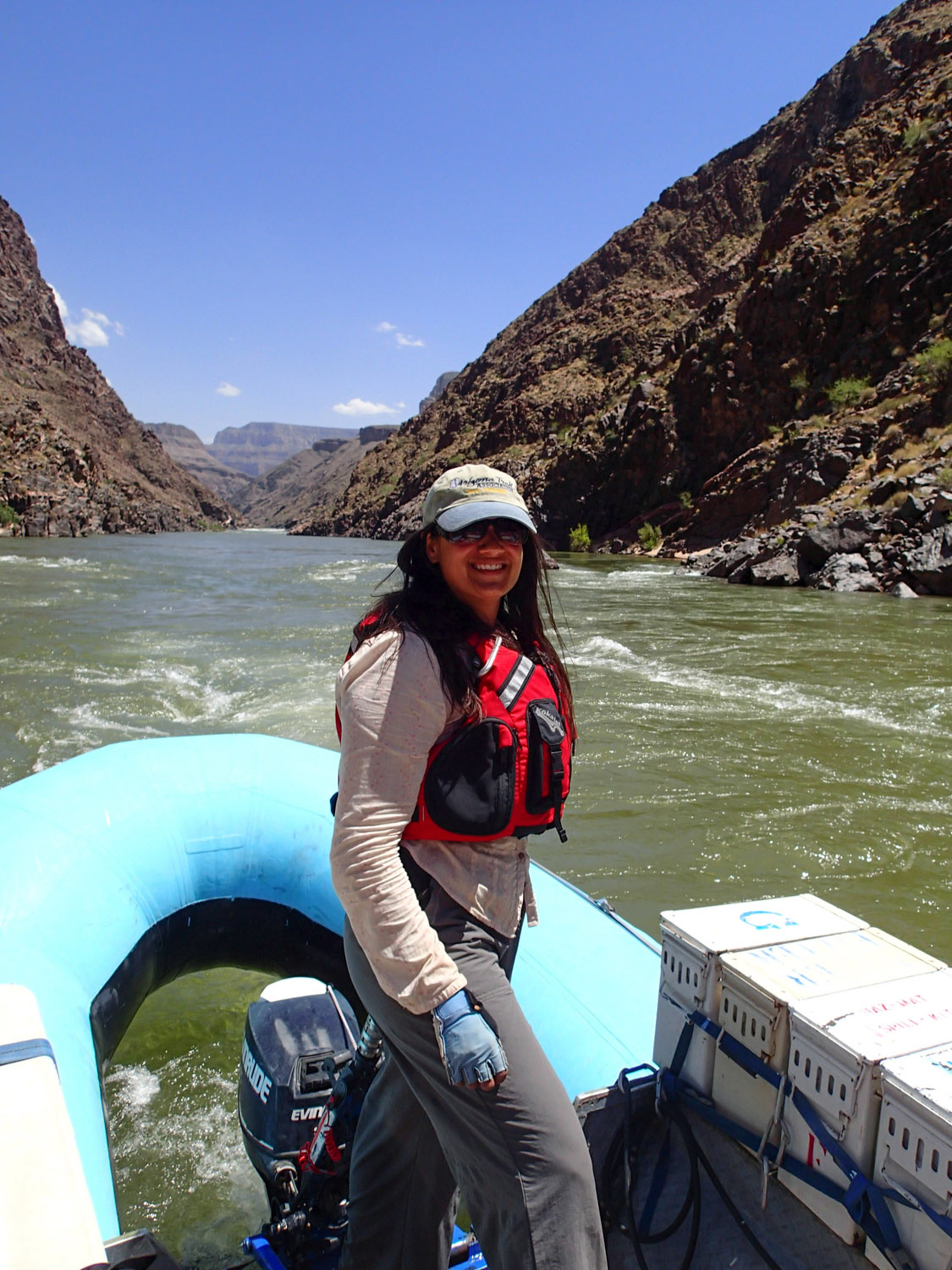
Sirena driving the boat – photo by Arizona River Runners
H: You guided raft trips on the Colorado River for a while. What is the canyon experience like from the river versus the trail, or even an overlook?
S: [On the river] you get to see places you could never get to by foot, but by boat you can just float right up and visit. Being on the river, in the rapids, having this amazing landscape all around you… it’s just one more facet of this place I already loved.
After I went on my very first river trip, as they say in the business, it ruined me for life. I looked into trying to work on the river and I got a job as a river guide the following season.
I really wish I had gotten into it earlier. I didn’t start working on the river until I was 38. It was really tough on my body and I’m glad that I had the years I did, but in the interest of self-preservation, four seasons was plenty.
H: So after raft guiding you founded your company Trails Inspire. You do such diverse work with public speaking, writing, and trail design. What made you want to start your company? What motivates you in your work?
S: It’s so hard for me to explain to people what I do because I do so many different things, but that’s also the way I like it and it keeps things really interesting, even as it’s chaotic.
Note: Sirena does community events – like an 80-mile 5-day trek of The Loop in Tucson – public speaking, writing, and trail projects.
- Sirena with the Tusayan Trails Master Plan
- A speaking event at Glen Canyon NHA
I had a background in community outreach and I wanted to continue that kind of work. I love to write, I love photography, I love public speaking, and so I decided to combine those things to bring awareness to the benefits of the outdoors. Whether economic benefit or community benefit, or physical or mental health benefit, there are specific facets, but the general mission of Trails Inspire is to promote the outdoors.
There are few things more amazing than going out to a piece of desert and then walking out on a trail that you built.
I also have a background in trail work so that’s a major part too. There are few things more amazing than going out to a piece of desert and then walking out on a trail that you built.
H: How did you first get involved in trail building?
S: Back in 2007 I got the idea to hike the whole Arizona Trail, and it wasn’t complete at the time. There still was about 60 miles that needed to be built.
There were trail building events going on around Tucson but I was working weekends and couldn’t go to the big weekend events. I heard about this group called the Summer Crazies, a bunch of guys that were mostly over 65, mostly retired. Every other Thursday for years I met with the Crazies and helped build the Arizona Trail.
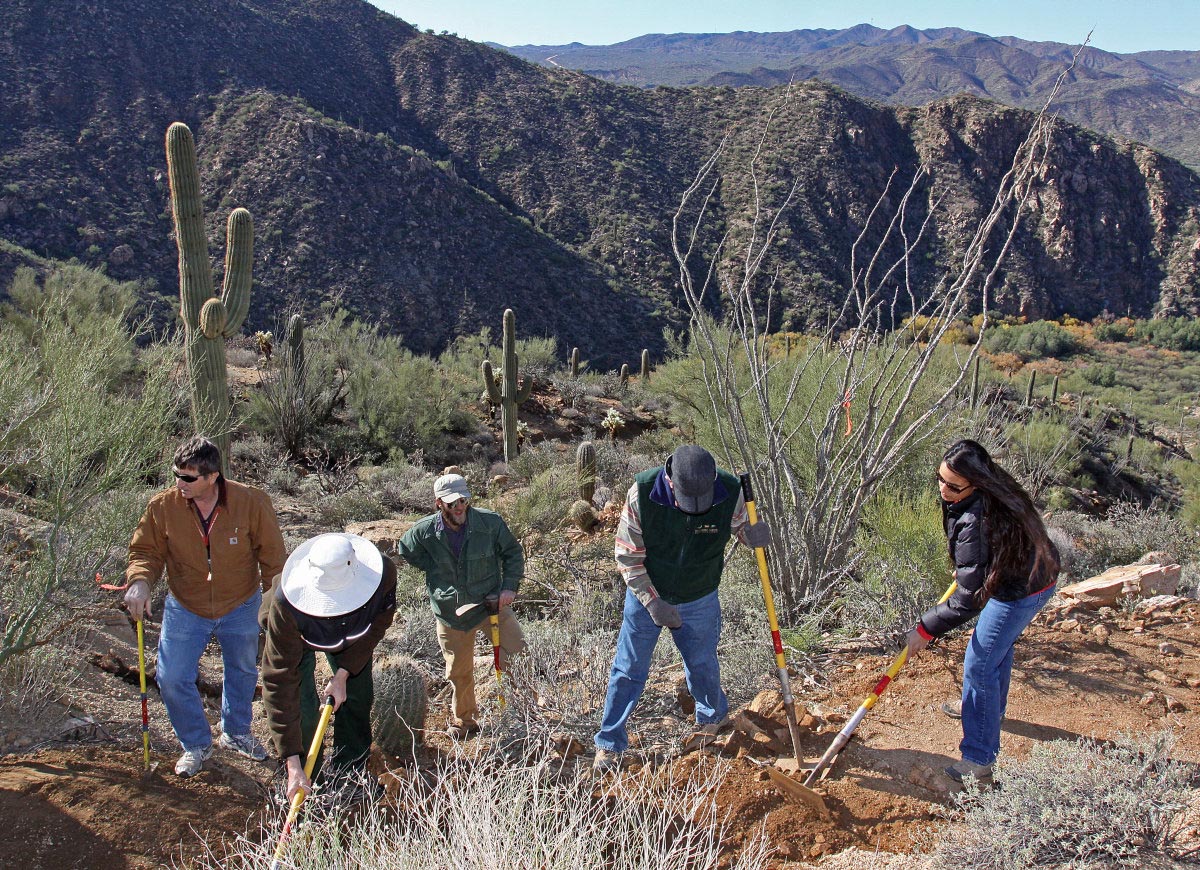
Sirena with other volunteers connecting the Arizona Trail from Mexico to Utah – Photo by Mike Bieke
A lot of people use trails, but very few people think about how they got there and how they’re maintained. It’s actually given me a much more deep connection to the land to go out and maintain trails and to be a part of that experience instead of just showing up and using them.
H: Wow, I love that. What advice can you offer other women who want to get into trail work?
S: There are lots of opportunities to volunteer, or for younger folks there are conservation corps programs where you can actually get paid to go out and do ten-day pitches.
I will always advocate for volunteering. It’s a wonderful way to get your foot in the door and try new things out.
H: Can you tell me about the trail project you’re working on right now with the Tusayan community (a Grand Canyon gateway community)?
S: Sure. The goals of it are two-fold. There’s adding recreational value to the town, adding interpretive trails where you can learn something about the canyon. But it’s also for people to commute around the town.
The part I’m most excited about is the Grand Canyon History Trail – an interpretive trail that will be ADA accessible and under a mile long. It will tell the history of the Grand Canyon, but specifically the human history and bringing in different perspectives. There is a Trail of [Geologic] Time in the Grand Canyon National Park and this is like that, but for people.
This is a place where people live and have lived for thousands of years.
H: Oh how cool. You mentioned your background in archaeology. Is this project a way of bringing in that interest?
S: Yeah absolutely. It’s funny how I’ve had a lot of different careers, I’ve studied a lot of different subjects, but things come around and are relevant again. When I was river guiding too, one of the biggest aspects I tried to get across to people was that this isn’t just a fun boat ride like Disneyland. This is a place where people live and have lived for thousands of years.
H: Along with the human history of a place, what other things do you take into consideration when you’re designing a trail?
S: Well a lot of it is dependent on water. Even in the desert we have to build out trails so they’re shedding water properly and don’t get washed out. But you start by looking at the land and asking, what’s a cool spot that I’d like to go to?

“What a place!” Arizona Trail, Mazatal Wilderness – Photo by Roger Smith
You choose your control points – your interesting features, like rock formations and hoodoos and slickrock, and figure out how your trail can incorporate that, but also be aware of proper grade of the trail so it’s not too steep, and then engineer the trail so it will shed water properly.
H: What’s the physical work of trail building like with your chronic pain?
S: I don’t do a lot of the actual building anymore. For my Tusayan project I will be having a conservation corps do the building. It’s kind of the same story as to why I stopped guiding, I try to pick and choose things that are sustainable in the long-term and not overdo it.
I really think that physical activity and being outside is one of the things that keeps me healthy, but I also know that trail work is a lot of work, so I’ve been subcontracting that kind of thing out.
H: So the pain you deal with, flares of fibromyalgia – it all started after a vehicle accident 20 years ago. How has that trauma shaped your life? How is it still affecting you?
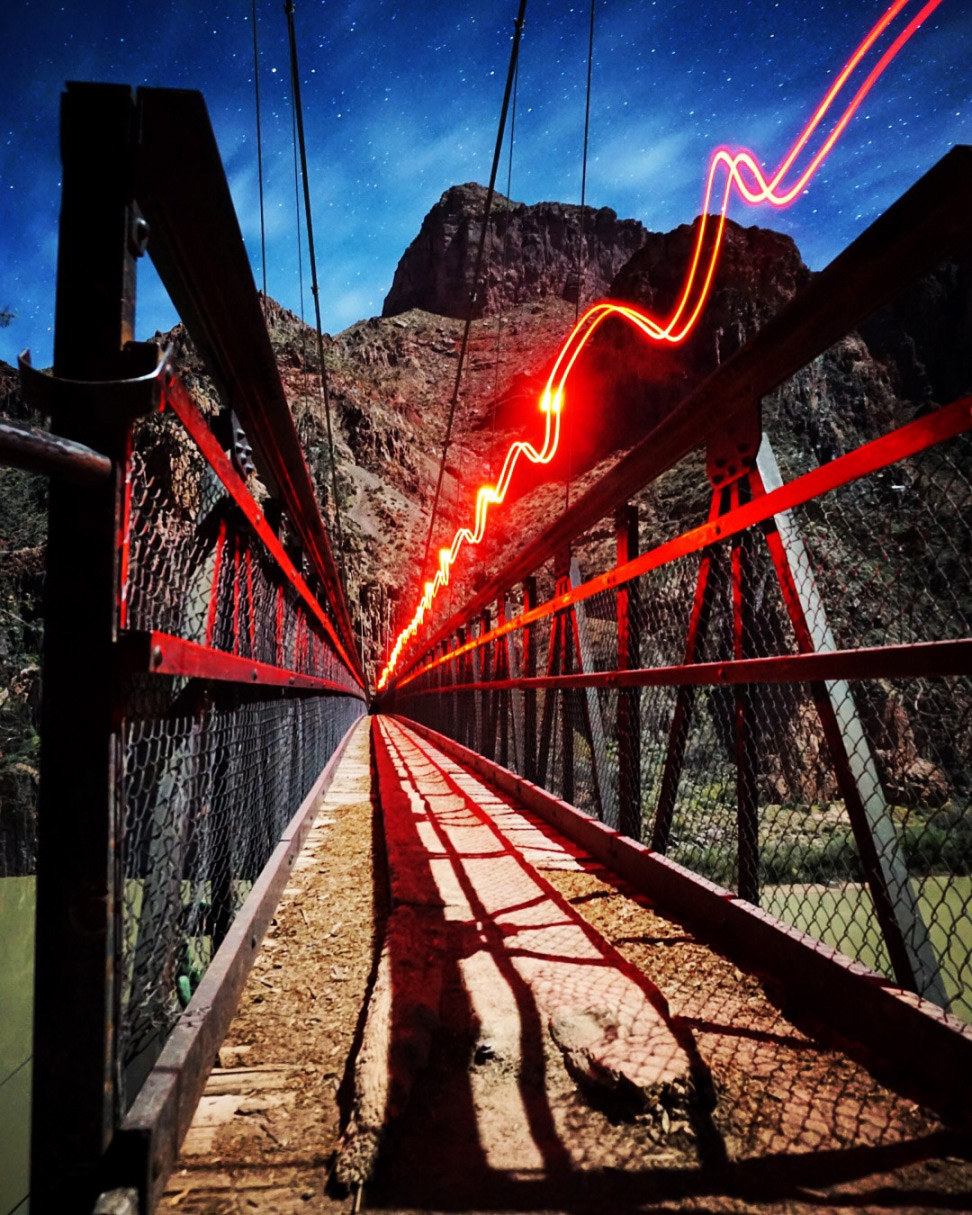
Light Painting on the Black Bridge, Grand Canyon – photo by Sirena Dufault
S: When I was first digging myself out of it years and years ago I had to learn new coping skills. As I did more physical activity I noticed that it kept my mind off the pain I was having. I also did a lot of artwork when I was really sick. It was something I could do and take breaks when I needed to. I got stronger and stronger and finally my fibromyalgia went into remission.
I think the biggest thing I’ve learned is gratitude… just being grateful for whatever I can do at that time and on that day.
When it came back [after ten years without a flare] it was a completely different experience. I knew that keeping moving was the most important thing, so even if I felt bad, I was still going to go out and do that backpacking trip. I might modify it a little bit like let up on the mileage, but maybe not. I had a flare recently and I ended up doing a 20-mile backpacking day.
Note: Sirena also tore her calf muscle on a backpacking trip the Grand Canyon in 2016 and had to be evacuated by helicopter from the trail. She’s section hiking the entire length of the Canyon (that’ll be over 600 miles of hiking when all is said and done) but she took some time off hiking to recover after that injury too.
I think the biggest thing I’ve learned is gratitude. So much of this is from my husband – he’s always the optimist and I am not – but just being grateful for whatever I can do at that time and on that day. For example, when I tore my calf muscle, I would take my little folding chair, drive to the desert, sit outside, and read a book or whatever – but still get outside in whatever manner I could. Even if it’s a struggle to get out of the house, I’ve never gotten out there and been like, “Oh, this is a total waste of time, I should have just stayed in bed.”
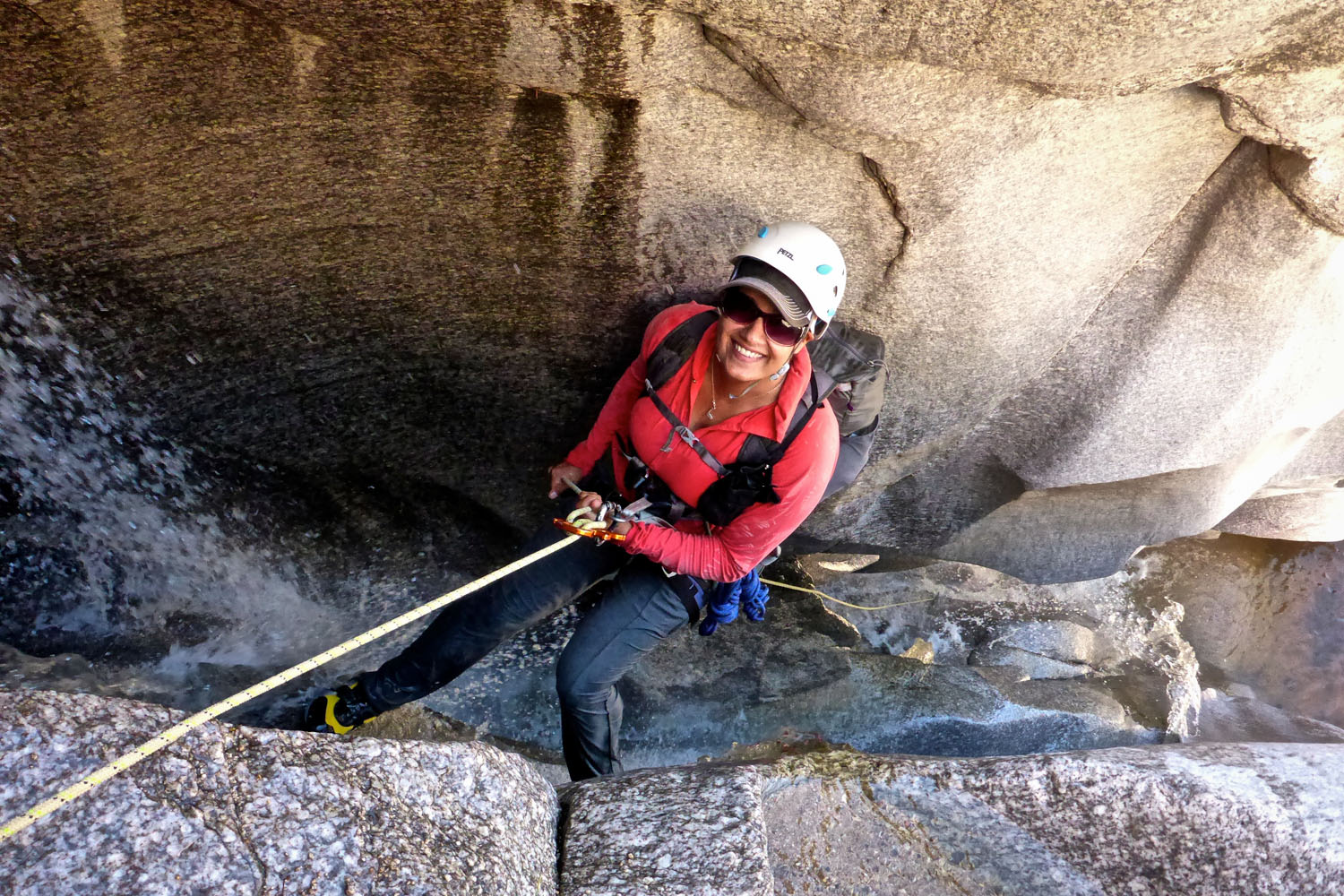
Willow Canyon – Photo by Russ Newberg
H: That’s such a great way to think about it. I think it’s incredible you’ve done backpacking trips and long distance hikes during flares. What’s it like to hike in pain?
S: You don’t think about it all the time. That’s the nice thing about backpacking, is that it does provide a distraction. But then there are those times when it’s like, okay I need to take a break because my back is on fire, and being really aware of the line where you need to rest or it’ll get worse.
I also try to be more aware of self-care stuff like stretching when I get to camp and taking care of myself when I’m in a flare rather than pushing through. I think I’m a little gentler with myself.
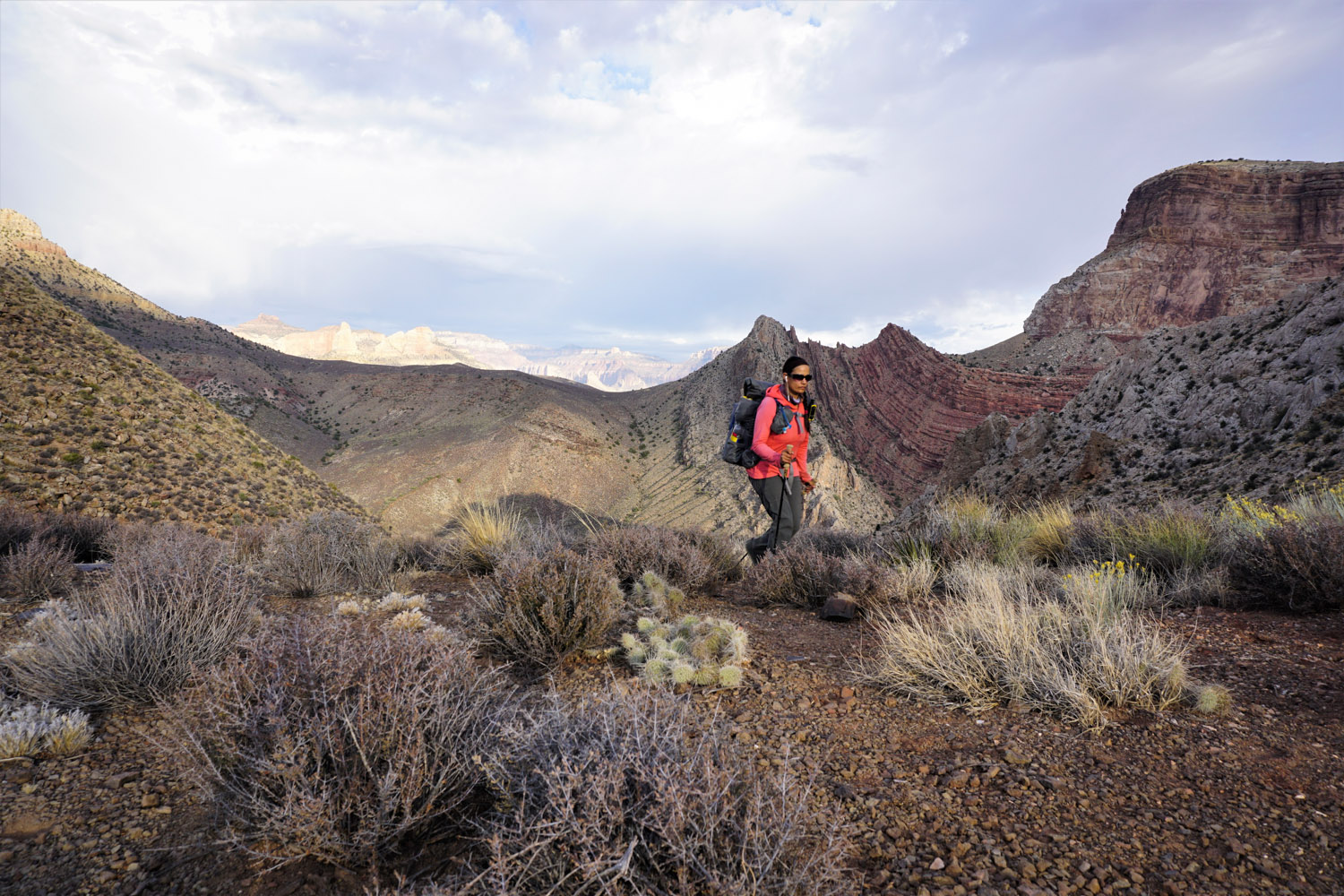
“My favorite trail is no trail in the Grand Canyon – doing off trail exploration. There’s just something about making your own way.”
H: What does the mental/emotional side of self-care look like for you?
S: One thing I’ve found that works really well for me is affirmations. You tell yourself what you want to hear and your body will respond. My old mantra was, “I’m strong, healthy, nimble, and quick.” You’re convincing yourself, right? You can convince yourself that you feel really bad, or you can convince yourself that you feel better, to a point.
One of the things about pain is that it’s overwhelming and depressing sometimes. It’s hard when you’re feeling really bad, but you have to regroup and look at your tools you’ve developed, whatever those are.
H: That’s pretty powerful, and you’re right – so much of our struggle can be mental. It’s inspiring to hear how much you have done, even in pain. Any final thoughts?
S: I think one thing that I haven’t explicitly said is that the biggest compliment you can pay me is to tell me that I’m inspiring you to do something. That’s why my company is called Trails Inspire.
I came from a culture where hiking wasn’t something we did and I didn’t grow up doing any of this stuff, so I want people to understand that anyone can go out and experience the outdoors. I think that people limit themselves because they don’t understand what they’re capable of.
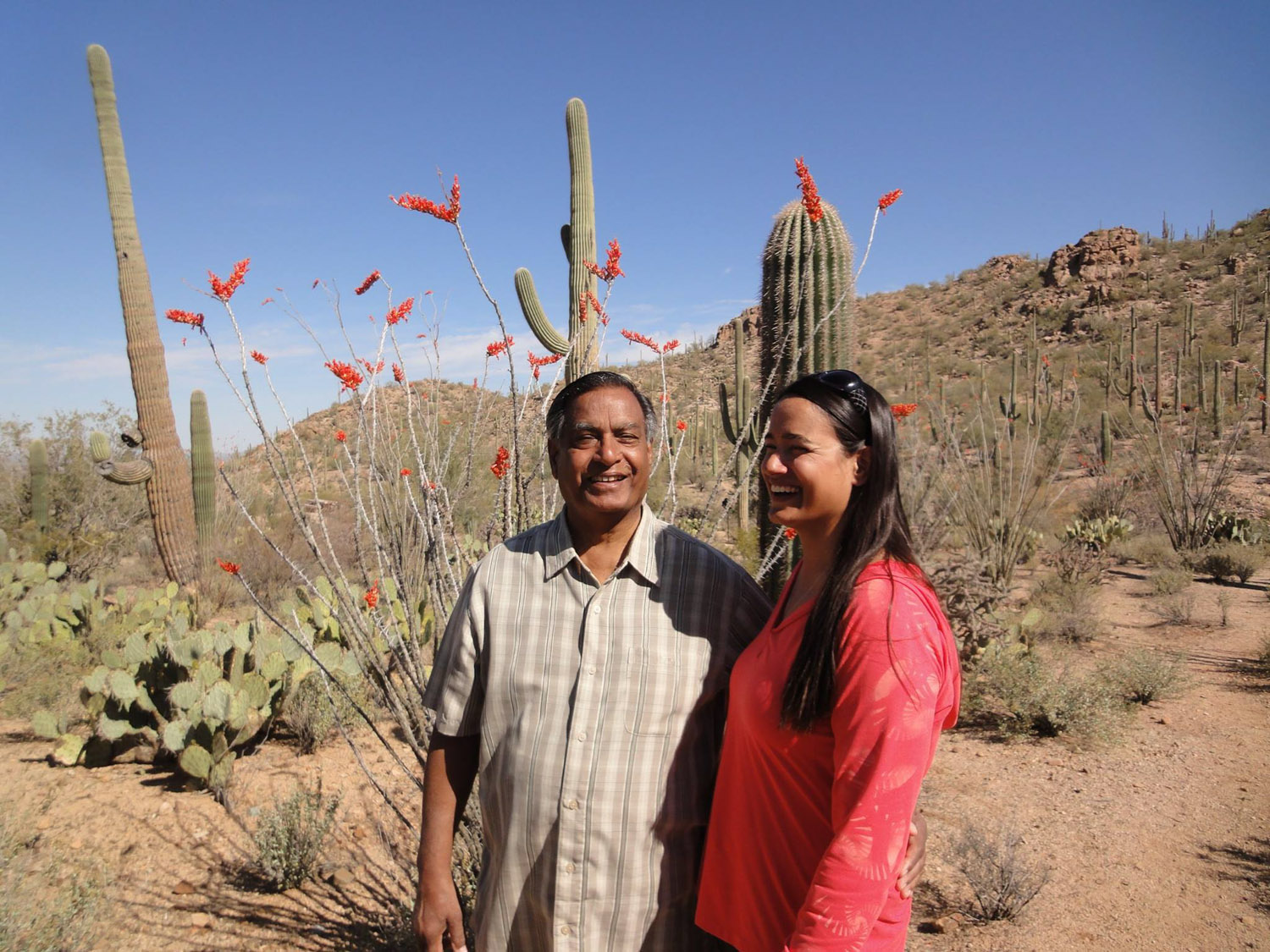
Sirena and her dad, Budh Rana
I came from a culture where hiking wasn’t something we did and I didn’t grow up doing any of this stuff, so I want people to understand that anyone can go out and experience the outdoors.
I started a lot of this later in life too. I completed the Arizona Trail for the first time at 33, and I was 38 when I started working on the river. There’s no age limit. People get this idea that they’re too old to try something. Some of the strongest hikers I know didn’t get into it until they retired.
People are capable of so much more than they give themselves credit for, especially women. Women a lot of times will be timid about trying new things. When I was on the river I would always try to find that woman who was absolutely terrified of the entire experience. Taking her and working to get her comfortable to the point where by night three she’s sleeping on a cot without a tent and realizing she can do everything – I think that’s my passion right there.
Read more from Sirena on her blog desertsirena.wordpress.com and on Instagram @desertsirena. Learn more about Trails Inspire at trailsinspire.com and find them on Instagram @trailsinspire.
Hailey Hirst is a multi-passionate creative who thrives on the often-overlooked details. She lives in Kelowna, British Columbia. Find her on Instagram.
What people and places make you feel most inspired?


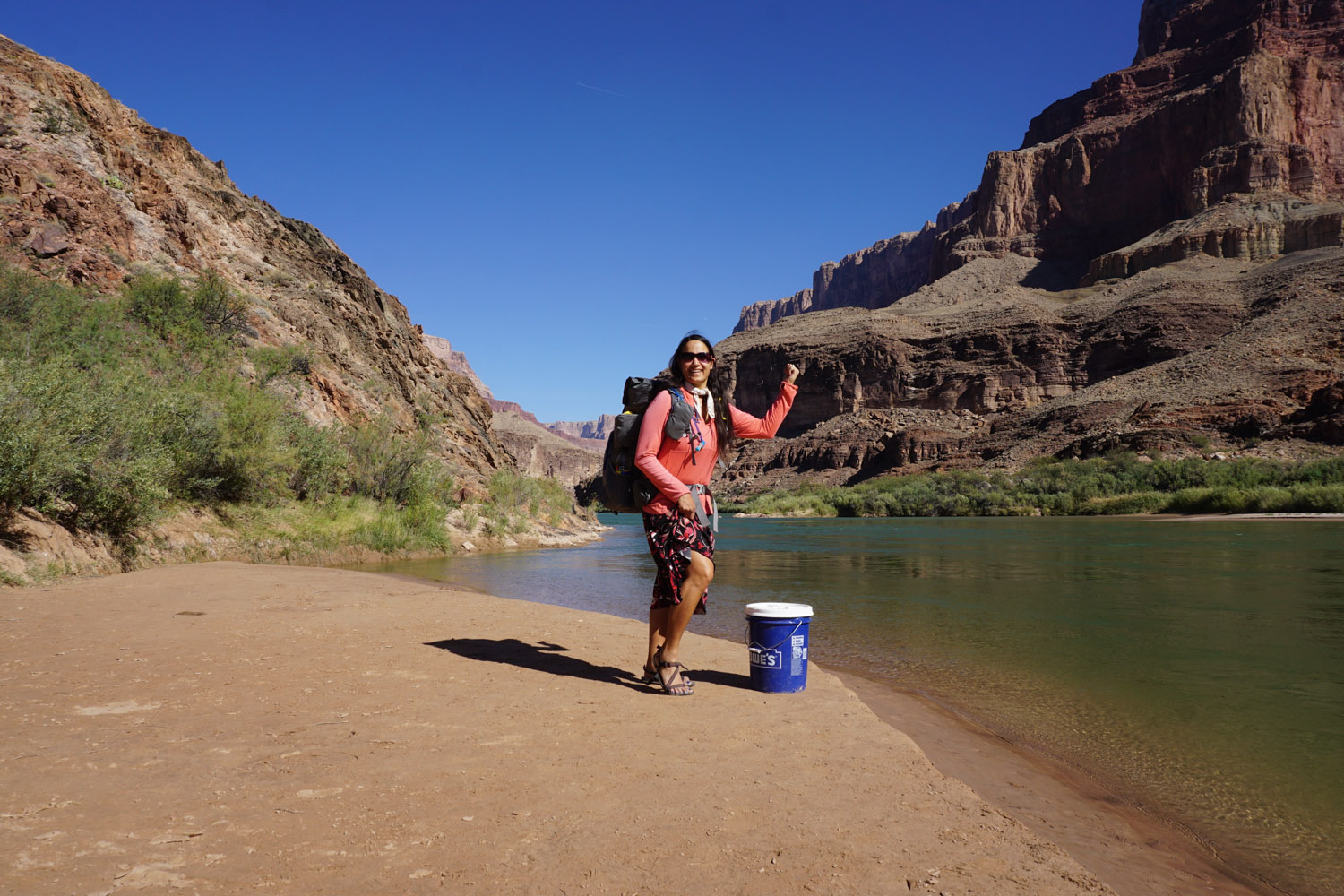
[…] I’m excited about my interview with one of my favorite website/podcasts She Explores: Blaze Your Own Trail […]
[…] was featured on the She Explores blog: Blaze Your Own Trail, by Hailey […]